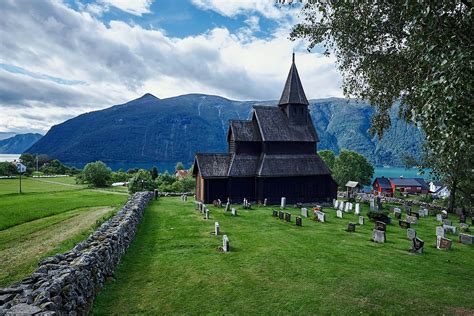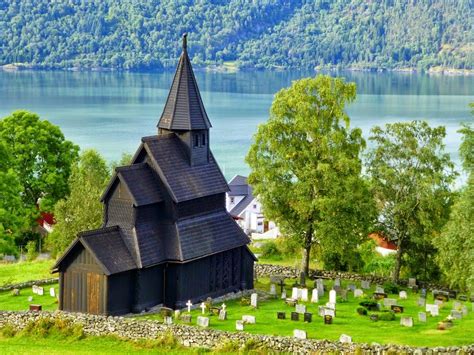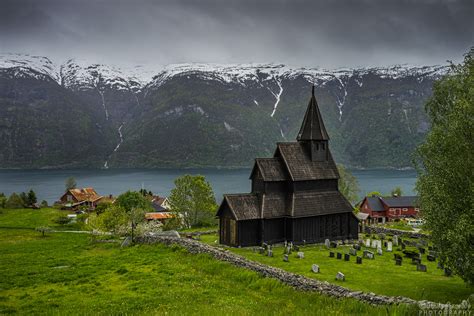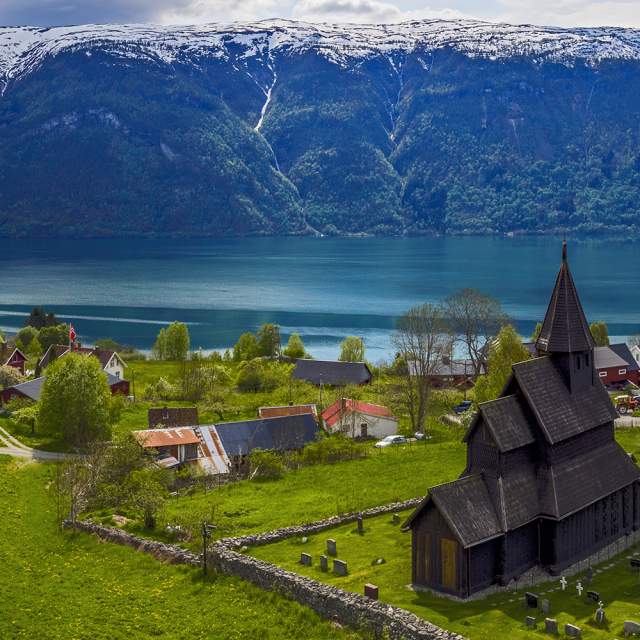The world is a vast tapestry of geographic features and cultural landscapes, each unique in its own right. From towering mountains and expansive deserts to bustling urban centers and serene coastlines, these natural formations shape the way people live, interact, and develop their cultural identities. Geographic features play a pivotal role in influencing the traditions, customs, and lifestyles of the communities that inhabit these regions. This article explores the deep connection between geography and culture, offering insights into how diverse environments have molded distinct cultural practices. Through case studies and comparative analysis, we will delve into the significance of preserving both geographic and cultural heritage for future generations while understanding their impact on local and global identities.
Dive deep into this topic alongside ritarblog.com
1. Introduction to Geographic Features and Cultural Landscapes
Geographic features and cultural landscapes are intertwined elements that define the character of various regions across the globe. Geographic features refer to the natural formations of the Earth, such as mountains, rivers, forests, and deserts, which shape the physical environment. Cultural landscapes, on the other hand, are the result of human interaction with these natural elements, reflecting the traditions, beliefs, and practices that evolve in response to the environment.
The relationship between geography and culture is profound. Natural landscapes often dictate the availability of resources, the structure of settlements, and the modes of transportation. In turn, these factors influence local customs, livelihoods, and societal norms. For instance, the coastal cultures of the Pacific Islands are deeply connected to the ocean, with traditions rooted in seafaring and fishing, while mountainous regions often develop unique agricultural practices and architectural styles suited to the terrain.
Throughout history, geographic features have played a crucial role in shaping civilizations, trade routes, and even conflicts. As we explore these interactions, we gain a greater understanding of how human societies adapt to and are influenced by their environments. This section serves as a foundation for examining the intricate ways in which geography molds cultural landscapes, offering a glimpse into the dynamic relationship between people and their surroundings.

2. Significance of Geographic Features in Shaping Cultures
Geographic features have long played a vital role in shaping the development of cultures across the world. The physical landscape of a region often dictates the way people live, work, and interact with their environment. Natural resources, climate, and terrain influence everything from food production and architecture to clothing and societal organization. In essence, geography forms the backbone of culture, providing both opportunities and challenges for human communities.
For example, societies in river valleys, such as the Nile in Egypt or the Indus in South Asia, flourished due to the availability of fertile soil and water for agriculture. These regions became hubs of civilization, where complex societies emerged, developing unique cultural practices, religious beliefs, and social structures. In contrast, nomadic cultures found in arid deserts or vast grasslands, like the Bedouin or Mongolian tribes, adapted to their harsh environments by prioritizing mobility and resourcefulness, leading to distinct traditions and lifestyles.
Geographic isolation can also foster the development of unique cultural identities, as seen in island nations like Japan or the cultures of the Andes Mountains. These societies have maintained a strong connection to their natural environment, which has shaped their traditions, art, and social norms.
Understanding the significance of geographic features in shaping cultures helps us appreciate the diversity of human experiences and the ways in which environment and culture are intertwined.

3. Case Studies of Unique Geographic Features Worldwide
Across the globe, unique geographic features have influenced the cultural development of the regions they inhabit. One notable example is the Amazon Rainforest in South America. As the largest tropical rainforest, its vast ecosystem has shaped the lifestyles of indigenous communities for centuries. These groups rely on the forest’s natural resources for food, shelter, and medicine, and their cultural practices reflect a deep respect for and connection to the land.
In contrast, the Sahara Desert in North Africa presents a starkly different landscape. Its vast, arid expanses have led to the development of nomadic cultures like the Tuareg, who have mastered survival in extreme conditions. Their traditions emphasize mobility, resourcefulness, and a deep understanding of the desert’s rhythms.
Another case is the Himalayan mountain range, which has shaped the spiritual and cultural practices of the people in Nepal and Tibet. The towering peaks, including Mount Everest, are not only geographic landmarks but also sacred sites in local religious traditions, influencing art, architecture, and pilgrimage practices.
These examples highlight how diverse geographic features have shaped distinct cultural identities.

4. Impact of Geographic Features on Local Traditions and Lifestyles
Geographic features have a profound impact on local traditions and lifestyles, often determining the way communities interact with their environment and each other. In many regions, the availability of natural resources directly influences local economies and cultural practices. For instance, coastal communities, such as those in Southeast Asia, have developed a rich maritime tradition. Fishing, boat building, and oceanic trade are central to their way of life, with festivals and rituals often centered around the sea and its bounty.
In mountainous regions, like the Andes in South America, geography has influenced both agriculture and social organization. Terraced farming, adapted to the steep terrain, has been practiced for centuries, allowing crops to grow at various elevations. The unique environment has fostered traditions centered around the harvest and respect for the mountains, which are often considered sacred in local beliefs.
Similarly, in desert regions like the Middle East, nomadic lifestyles have evolved in response to harsh climates and scarce resources. Bedouin traditions emphasize hospitality, mobility, and the ability to navigate vast, inhospitable landscapes. Their cultural practices are shaped by their need to adapt to their surroundings, creating strong communal bonds and survival strategies.
In all these cases, geographic features do more than shape the physical landscape—they influence cultural values, customs, and day-to-day living, making geography a vital part of cultural identity.
5. Comparative Analysis of Diverse Cultural Landscapes
Comparative analysis of diverse cultural landscapes reveals the profound ways in which geography influences cultural development across different regions. For instance, coastal and inland communities exhibit distinct cultural characteristics shaped by their environments. Coastal areas, such as those in Japan and the Mediterranean, often have cultures deeply connected to maritime activities. These regions boast vibrant fishing industries, unique seafood cuisines, and a rich tradition of maritime festivals. The sea not only influences daily life but also plays a crucial role in shaping local art and folklore.
In contrast, inland areas, such as the Great Plains in the United States or the central steppes of Asia, often have cultures centered around agriculture and pastoralism. These landscapes foster traditions of large-scale farming or herding, with social structures and festivals reflecting the agricultural calendar or the rhythms of nomadic life. The emphasis on land management and seasonal cycles influences both lifestyle and cultural practices.
Mountainous regions, such as the Swiss Alps or the Himalayas, present yet another unique cultural landscape. In these areas, traditions often revolve around adaptation to rugged terrain, with architectural styles, clothing, and festivals reflecting a deep connection to the mountainous environment.
By examining these diverse cultural landscapes, we gain insights into how geography shapes not only the physical environment but also the rich tapestry of human culture.
6. Challenges and Preservation of Cultural and Geographic Heritage
The preservation of cultural and geographic heritage faces numerous challenges, primarily driven by environmental changes and human activity. Geographic features such as forests, mountains, and rivers are increasingly threatened by deforestation, climate change, and urban expansion. These alterations not only impact the physical environment but also disrupt traditional ways of life that have developed in harmony with these landscapes.
For instance, coastal erosion and rising sea levels threaten the existence of coastal communities and their cultural practices rooted in maritime traditions. Similarly, deforestation in tropical regions jeopardizes indigenous communities that rely on forests for their livelihood and cultural identity.
Efforts to preserve cultural heritage often confront issues related to modernization and globalization. Rapid urbanization and technological advancement can overshadow traditional practices and local customs, leading to the erosion of cultural identities.
Conservation initiatives must balance the preservation of natural environments with the needs of local communities. Strategies such as sustainable tourism, environmental protection laws, and cultural heritage programs are crucial in maintaining the integrity of both geographic features and the cultures they support. Ensuring that future generations can appreciate and learn from these rich traditions and landscapes requires ongoing commitment and collaboration.
7. Conclusion and Future Perspectives on Geographic and Cultural Studies
In conclusion, the intricate relationship between geographic features and cultural landscapes underscores the profound impact that natural environments have on shaping human societies. From coastal communities to mountainous regions, each geographic setting fosters unique cultural practices and traditions, reflecting the adaptability and creativity of people in response to their surroundings. As we have explored, these interactions highlight the diversity of human experience and the deep connection between environment and culture.
Looking ahead, future perspectives in geographic and cultural studies should focus on enhancing our understanding of how ongoing environmental changes, such as climate change and urbanization, are influencing cultural practices and traditions. Researchers and policymakers must work together to develop strategies that both protect natural environments and support cultural heritage.
Emerging technologies, such as Geographic Information Systems (GIS) and remote sensing, offer new opportunities for studying and preserving these landscapes. By integrating these tools with traditional cultural knowledge, we can gain deeper insights into the dynamic interplay between geography and culture. Ultimately, fostering a greater appreciation for the rich tapestry of global cultures and landscapes will be essential in preserving and celebrating our shared human heritage for future generations.
ritarblog.com

